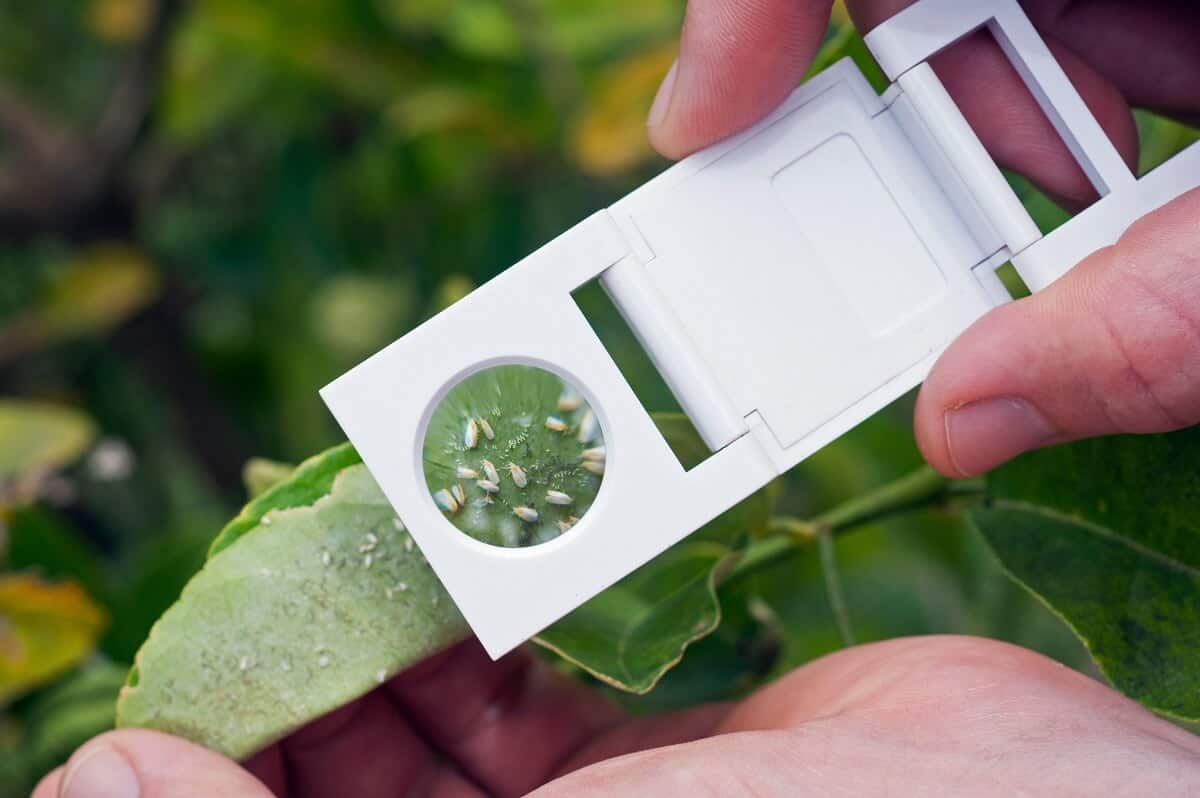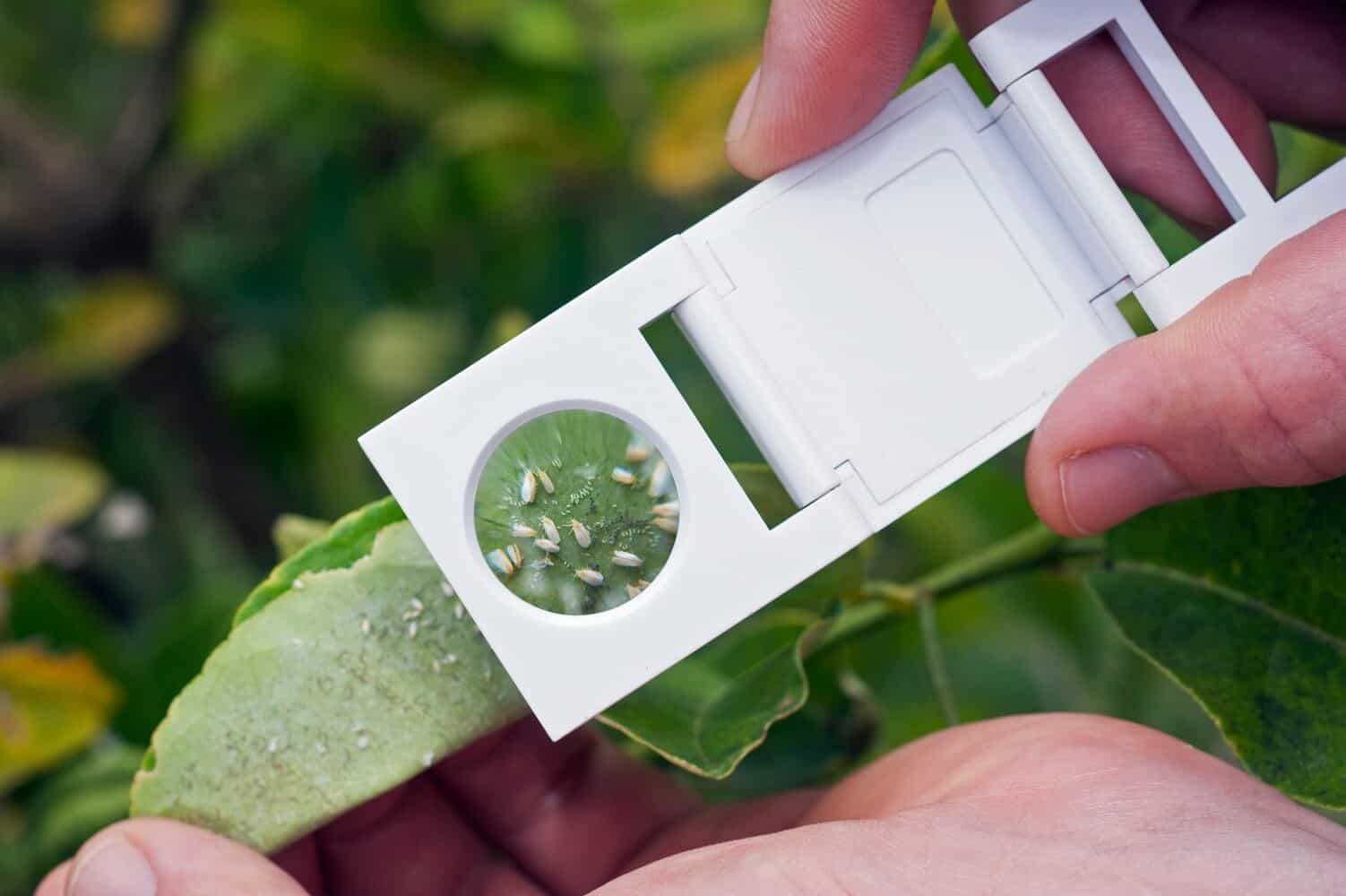Is getting rid of white flies an endless struggle for you? You are not alone. Almost every gardener has faced this eternal fight of protecting their plants from harm caused by these small fuzzy moth-like bugs.
Whiteflies can ravage your vegetable gardens, flower beds, and houseplants leaving all your efforts of having a beautiful home fruitless. The effects of these bugs on plants are very devastating while their fast reproduction makes it difficult to control if you don’t act fast.
However, this shouldn’t discourage you from continuing with your fight against whiteflies. It’s not by chance that you have come across this article about how to get rid of whiteflies at home. I bet this is all you have been looking for.
This article will help you identify the presence of whiteflies on your plants and select the most appropriate way to deal with them.
Let’s begin.
What Are White flies?
Whiteflies are soft-bodied, winged insects closely related to mealybugs and aphids. They are somewhat triangular-shaped and can be as small as 1/12 of an inch. These insects are often found in clusters on the undersides of leaves.
They can be found indoors in USDA zone 7 and the colder regions or outdoors as seasonal outdoor pests (happens when you purchase outdoor plants from an infected source). On the other hand, in warmer areas whiteflies are a nuisance both indoors and outdoors as they can overwinter and reproduce outdoors all year round.
In most cases, whiteflies start to show up in mid to late summer when the environment is humid and warm.
How to get rid of whiteflies in the garden and indoor plants (Simple DIY whitefly control measures)
Identify the presence of white flies

Be it on your ornamental flowers, vegetables, or indoor houseplants whiteflies, just like sap-sucking aphids use their piercing mouthparts to suck sap from the plants (new growth and underside of the leaves).
After feeding for several days, these insect pests deposit honeydew on the plant’s leaves. If left unattended, the honeydew might lead to fungal infections like sooty mold. The honeydew also attracts ants and in this case, you might find ants around the plants a case that wasn’t there before infestation.
Apart from this, heavy infestation by whiteflies weakens the plants and interferes with photosynthesis (food making). The leaves, therefore, wilt and turn yellow, growth becomes stunted and finally, the leaves fall off the plant.
Spray plants with a strong blast of water
The first step to take after you identify the presence of whiteflies is to blast the whiteflies with a spray bottle or a watering hose. This forces the whiteflies to scatter and dislodges the nymphs and the eggs to some extent.
This method also works well in the control of aphids and many other insect pests.
Mulch your plants with a reflective aluminum mulch
Mulching your plants with a reflective aluminum mulch not only increases temperatures and the amount of available light for healthy plants but also makes it challenging for whiteflies to find their preferred host plants. In addition to this, these mulches also help to suppress weeds leaving no room for insects to hide.
Moreover, reflective mulches are cost-effective and good choices for additional physical measures for plant protection within an integrated plant management system.
Make use of the yellow sticky traps
Yellow sticky traps are useful fly traps used to monitor and control whiteflies indoors as well as in the gardens well before you observe damage on the plants. The yellow color attracts whiteflies and once these insects land on the sticky traps, they are immediately trapped in the adhesive, and their movement becomes decelerated.
To achieve the best results, introduce the traps early in the season before the pest springs up. By catching the adults with Yellow Sticky Traps before they reach the plants, the build-up of whiteflies will be delayed.
Introduce natural predators
Introducing natural predators such as female beetles, parasitic wasps, and lacewings to your garden work wonders. These tiny critters feed on adult whiteflies as well as on the eggs providing effective control of any infestation going on in your garden.
Wondering how to introduce natural predators to your home? Well, there are different ways to do this. For example, you can purchase natural predators from reputable outlets near you or, grow plants that attract beneficial insects such as daisies, Boltonia, cosmos, and yarrow.
Use Organic Neem Oil
By spraying organic neem oil on your vegetables, fruit trees, houseplants, and flowers you can kill whiteflies’ eggs, larvae, and adults.
Mix neem oil in a garden sprayer at a rate of 1 Ounce (2 tablespoons) per gallon of water and spray on stems and all leaf surfaces (do not forget the undersides of leaves) until completely wet. For effective control of whiteflies, spray neem oil on a 7 to 14-day schedule as you follow the manufacturer’s instructions.
Apart from controlling whiteflies, neem oil is also good at controlling spider mites, aphids, Japanese beetles, moth larvae and, scales without affecting the beneficial insects.
You can also use neem sprays for mildew, scab, leaf spot, anthracnose, blight, rust, and botrytis but the spray should contain clarified hydrophobic extract of neem.
Make use of plants that repel whiteflies
Nowadays, gardeners have known the benefits of growing marigolds as a companion plant to crops such as tomatoes for whitefly control. The flowers of a marigold plant release a chemical called limonene, mostly found in household air fresheners, which repels and slows down the whiteflies.
Therefore, grow marigolds around your home or houseplants to repel whiteflies or use pods of pure limonene.
Apart from controlling whiteflies, marigolds are safe for bees and provide nectar for the bees to pollinate your plants. Using marigolds for whitefly control is a great alternative method that reduces pesticide use and enhances plant and animal diversity.
Use Insect Shade Nets
Shade nets are clear netting products (physical barriers that deny pests access to your plants) developed for horticultural use in fruits, vegetables and, ornamentals.
They are mainly used to control pests like whiteflies while significantly reducing pesticide use. Shade nets are affordable alternatives to expensive conventional protected cultivation in tunnels or greenhouses.
They work through partial control of the atmosphere and the environment by reducing light intensity and effective heat during day time to the plants grown under it. Moreover, shade nets are cost-effective and a safe way to protect your plants from insects and pests.
Boostrap Farmer an online garden center has durable and affordable insect nets for this purpose. Make a point to check them out.
Vacuum the infested leaves
Make use of your hand-held vacuum cleaner to eliminate whiteflies from your plants. Use the cleaning hose to vacuum the underside of your plants until no whiteflies remain. You should do this in the evening or early in the morning when these insects are less active. Repeat the process for several days as much as needed.
After you are sure that you have removed all the whiteflies, dispose the contents of your vacuum cleaner away from your garden and houseplants, or to be sure you are on the safer side freeze them before disposal.
Caution: Be extremely careful when using this method as you can easily damage the plants’ leaves.
Use an insecticidal soap
Insecticidal soaps are effective at killing whiteflies on contact while causing less harm to beneficial insects. Just ensure that the underside of the leaves is fully covered for the best results. Apart from their effectiveness, insecticidal soaps do not leave toxic residues therefore are good for the environment.
In addition to this, insecticidal soaps are easy to use which makes them more appealing to most gardeners.
However, there are a few though bearable limitations to the use of insecticidal soaps including; potential damage to plants, absence of any residual effectiveness and, the need to wet the insects during application for effective control.
You can also check out our list of the best garden insect spray with Spinosad for more alternatives.
Try a homemade whitefly spray
This white flies home remedy is a great and cheap alternative to potentially harmful pesticides as the soap has a minimal environmental impact and is safer for use around pets and children.
Start by preparing a soapy water spray by blending the liquid soap with water at a ratio of two to five tablespoons of soap per one gallon of water.
After you are done with blending, test the performance of your soap spray by spraying on a few white fly-infested leaves and observe for any injuries for about a week. If there are no injuries from the spray, you are free to treat all your houseplants.
You should thoroughly spray the plants every week and ensure that both the upper and the underside of the leaves as well as the other protected plant parts are fully covered with the soapy mixture. Repeat this for as long as it’s needed until the whiteflies are gone.
Pro Tip: Avoid any soap with citric acid as an ingredient and use softened, distilled, or purified water for effective control of whiteflies. Also, water your plants well before applying the treatment as the soap spray can injure water-stressed plants.
You can also read about how to get rid of aphids permanently and naturally.
Conclusion
There you have it! These are the several strategies and tactics you can use today to finally get rid of white flies in your garden.
What’s more, almost all the tactics are natural and eco-friendly. So, you don’t have to worry about getting rid of whiteflies at the expense of the environment.
As always let me know your thoughts. And, if you enjoyed reading this article, consider giving it a share!
